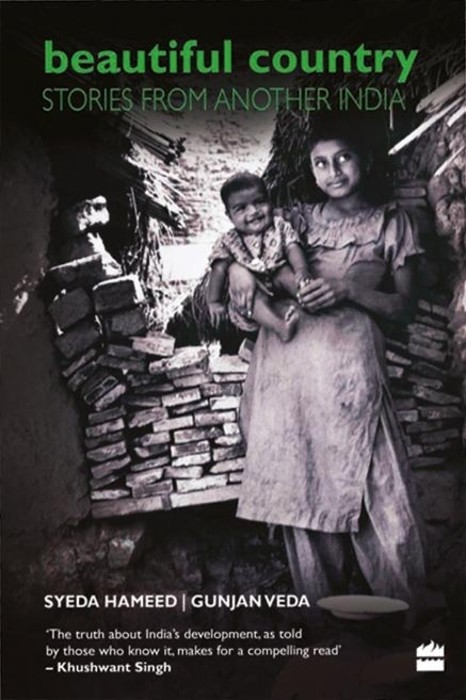By: Patricia Mukhim
This is an era where a book a day gets published and released. But Beautiful Country: Stories from another India – really floored me. The book is a documentary cum travelogue stylishly pieced together by two extraordinary women – one a development and gender activist of several years and Member Planning Commission; the other a young, sensitive researcher and consultant with the Planning Commission – but both raconteurs par excellence. That’s what Syeda Hameed and Gunjan Veda are- raconteurs of a different kind. Beautiful Country captures the spirit of survival of the other India, now pejoratively referred to as Bharat. It’s a book that tightly packs slices of history, sociology and anthropology in an eminently readable format. Hard facts are interspersed with what Dr Montek Singh Ahluwalia, Deputy Chairperson, Planning Commission (who has written a foreword for the book) calls the ‘episodic memoirs.’
Beautiful Country lends a voice and a platform for the millions of unheard of, unwritten stories of the peripheries of this country. There are stories of valiant protests against state repression in India’s North East but also narratives of hope in ‘Akha’ the boat clinics of the char areas of Assam taking health care to people who struggle to live with floods. What lighten the readers’ burden are the Urdu verses from Faiz and Iqbal and snippets from western poetry. They soften the rough contours of what is essentially a document that points very shrilly at the developmental backlogs of this country despite several tomes of five-year plans.

Few of us would have had the opportunity of visiting the Andaman and Nicobar islands. Beautiful Country provides an overview of the sheer beauty of nature but also a distressing insight into the lives of a lesser known people, unable to keep pace with civilisation and clearly losing out in the race. Tales of the tsunami wrecked Andamans and their reconstruction is truly moving. Often one gets the feeling that if Syeda had a magic wand she would bring what iskneeded to people in rural India, not by the uniform, unilateral development packages planned by an elite that has no idea what people really need, but a more humane system where access to development does not come with the threat of the destruction and extinction of their cultures. Stories about the Jarawa, Onge and Great Andamese tribes are heart wrenching. Theirs is a hopeless cry for survival in a civilisational chaos. Some words from the book will stay in the readers’ minds for a long, long time. In Kerala where Syeda experiments with holistic health therapy in the quiet environs of the Vaidya Sala in Kottakkal, she reflectively echoes what many of us feel when asked to just ‘be’ and to simply sink in the nothingness of it all, “My clogged mind a container overflowing with dispensable facts.”
But what Syeda has brought to the fore regarding ‘indigenous healing systems that have stood the test of time, would warm the hearts of many traditional healers across this country. They actually heal the huge majority of rural patients having no access to so-called modern allopathic medicines and health care systems. Her emphatic statement endorsing the power of indigenous healing encapsulates what many indigenous people of this country have been struggling to project to an obtuse system which allows no space for anything other than the familiar ‘mainstream’ medicine. Syeda’s reflective quote “Today I feel stronger and more confirmed in the faith, in the efficacy of our indigenous system of medicine – a science we call ‘alternative’ and sometimes think of as quackery. It is time to take a deep and serious look at our traditional systems of health; or will we only do it when the Western world says they are good for us,” are priceless. Words of wisdom indeed in a world bowled over by medical equipments and medical specialists who have forgotten their Hippocratic Oath the moment they uttered it.
Gunjan Veda comes across as a remarkable researcher who revisits places and incidents to see things from different lenses. This is a rare exception even among researchers. One was a little disappointed though that the plight of the adivasi tea garden workers of Assam was not mentioned; nor was the predicament of several thousand people, particularly women, displaced from their hearth and homes on account of ethnic conflicts and now living in relief camps for over 15 years. But I guess you cannot have everything in one book. So can we look forward to a sequel from the two raconteurs?



